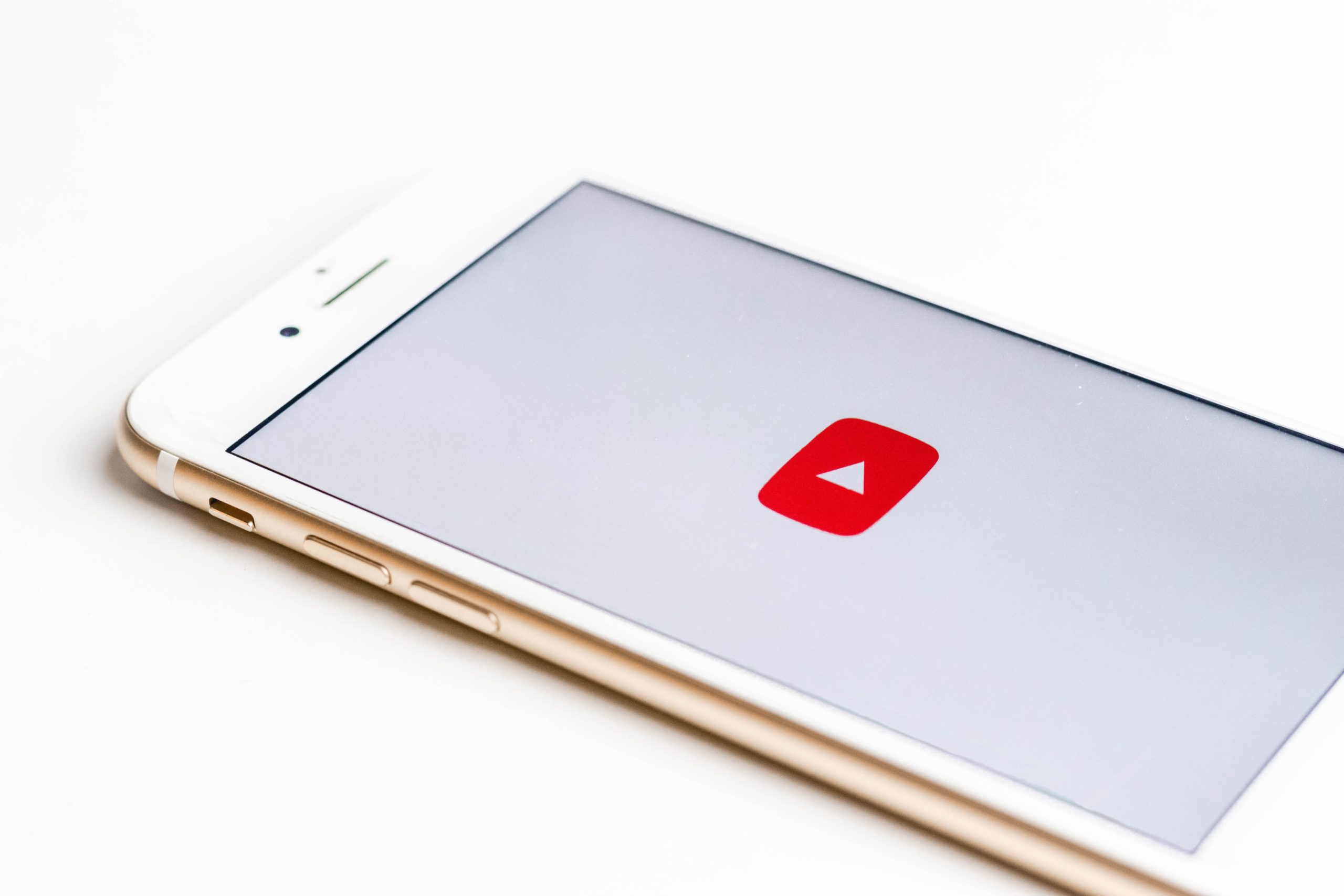YouTube Shorts continue to grow in popularity. Green Apple Strategy shares how creators can use short-form video content to increase brand engagement.
Continue reading7 Marketing Tools Your Team Can’t Live Without
Executing a marketing strategy is a lot like climbing a mountain. Both are focused on an audacious goal that requires effort and dedication to achieve. You need an intentional plan for how you’re going to climb the mountain. There will also be unexpected obstacles and unexpected turns along the way. Sometimes you have a clear path to reaching the summit. Other times, you may need a guide to help you navigate new terrain.
And just like mountain climbing, you need a variety of marketing tools that can help you along the way. These tools may help you assess your current situation, work more effectively, and take the right steps toward reaching your goal. Each tool might serve a different purpose, but they’re all essential for your survival.
7 Marketing Tools Your Team Can’t Live Without
Here are seven types of tools you need to execute successful marketing campaigns:
1. Collaboration Tools
Executing a marketing plan requires significant collaboration. When you’re managing all the elements for your content marketing campaigns or seeking input on an important design project, there are numerous stakeholders and steps that need to be addressed.
At Green Apple, our hybrid office model has trained us to become experts in marketing collaboration. Here are just a few of the collaboration tools that make it easy to collaborate with clients, team members, and freelancers in the Green Apple Orchard from across the country:
- Google Workspace — Google’s collaborative tools such as Docs, Slides, and Sheets make it easy to create, approve, and deliver assets in a timely fashion. Rather than tracking multiple documents or attachments through email, Google makes it easy for team members and clients to collaborate in the same documents in real time.
- Basecamp — Project management is essential for streamlining work and optimizing efficiency. Basecamp rolls all of the core necessities of project management into a browser-based tool that makes it easy to track campaigns from start to finish. We’ve used Basecamp for years, and it has become an integral tool for our team.
- Zoom — Video conferencing became an essential business tool during the pandemic. We’ve found it incredibly helpful for improving our team’s virtual meetings, meeting with clients in other cities, and connecting with The Orchard, our remote contract team members.
2. Design Tools
The image you portray is important. The good news is that it’s easier than ever to find affordable design tools that make your brand stand out and look professional. Tools like Canva can be incredibly helpful for designing eye-catching graphics and images for social media. However, knowing when to use Canva and when to outsource to a professional can be essential to maximize the impact of graphic design for your brand.
3. Digital and Social Media Management Tools
With all the various social media platforms, it’s almost impossible to manage all of your content production needs without a social media management tool. Social media management tools help you plan, schedule, and monitor your social media posts. These tools also give you the chance to review and analyze your audience engagement on multiple channels.
At Green Apple, Sprout Social is our social media management tool of choice. It makes it easy to manage various social media accounts for all of our clients. It also provides comprehensive reporting that provides a detailed look into content performance through competitive analytics and strategic insights.
4. Online Advertising Tools
Online advertising has exploded in recent years. In fact, digital advertisements will account for more than 66% of the total global advertising spend by 2023. It allows you to create targeted messages to reach and expand your audience, improve your brand awareness, and generate more qualified leads.
At Green Apple, our digital marketing team collaborates with online advertising specialists to design and implement online advertising campaigns for B2B and B2C clients. Some of our favorite tools include Google Keyword Planner and Adstage.
5. Lead Capture & Nurturing Tools
If you rely on inbound marketing to generate sales leads, you need a marketing tool that captures potential customers and guides them through the marketing funnel. The good news is that most tools integrate with your website to create a seamless user experience.
Over the years, we’ve used lead-capturing tools such as Unbound and Leadpages to capture leads. We’ve also worked alongside several clients to leverage marketing CRMs such as Hubspot to track and manage marketing leads.
6. Website SEO Tools
Whether it’s keyword research, content optimization, or checking your current page rankings, every marketer needs a go-to tool for planning content and optimizing it for SEO.
Green Apple recommends SEMrush, the top-rated keyword tool we use for our clients. We’ve found that it’s the best tool to implement SEO tips that actually work. Their platform offers comprehensive reports to monitor competitors’ backlinks and offers backlink audits for sites that have already linked to your website with an anchor text.
7. Customer Experience & Testimonial Tools
In today’s digital world, consumers hold the power when it comes to your brand reputation. A negative customer review or poor client experience can have a devastating impact on your brand. At the same time, testimonials and feedback can be some of the most beneficial assets for brand management.
At Green Apple, we’ve worked with a variety of customer experience and testimonial tools to capture feedback for our clients. Delighted is a customer satisfaction platform that allows you quickly and easily capture feedback through customer surveys. LoyaltyLoop is another tool we use to better understand and improve upon the customer experience.
Finding the right set of marketing tools can be overwhelming. It’s important not to lose sight of the forest through the trees. Focus on your end goal and then find the tools that will help you get there. Our team at Green Apple can help you determine which tools are a fit for you. We’d love to take a look at your marketing goals and help you design and execute a strategy to meet them.
10 Spot-On Marketing Quotes
Finding new sources of inspiration and creativity can be one of the most helpful ways for marketers and business owners to stay proficient at their craft. You never know what might spark an idea or help identify the angle for your next marketing campaign.
At Green Apple, we like to keep ourselves inspired when it comes to new and better ways of marketing. Our team is constantly searching for creative practices and marketing ideas to incorporate into our work. It’s not uncommon for our team to share highlights from the latest marketing books we’ve read or quote thought leaders we’ve heard on podcasts during a whiteboard session.
10 Spot-On Marketing Quotes
Here are ten marketing quotes we’ve shared that do a good job of capturing the essence of marketing, where it’s headed, and how companies can maximize their effectiveness when it comes to reaching customers and inspiring people to take action:
1. “Marketing strategy will impact every piece of your business, and it should be tied to every piece of your business.” – Brandon Andersen
I love this quote because it speaks to the new reality that marketing integrates with every part of your business and vice-versa. This is a key mindset in the way we approach marketing strategy at Green Apple.
2. “The new reality is that sales and marketing are continuously and increasingly integrated. Marketing needs to know more about sales, sales leaders need to know more about marketing, and we all need to know more about our customers.” – Jill Rowley
Sales and marketing alignment is absolutely essential. This quote perfectly addresses the new reality of how the two teams should work together.
3. “As marketing converges with customer service and sales, marketing today is more about helping and less about hyping.” – Joel Book
Marketing tactics aren’t the only thing that’s evolved. As marketing continues to work closely with customer service and sales, it’s important to adopt a helping mindset.
4. “Every email is an opportunity to test a different benefit or angle.” – Heather Morgan
Because of the nature of email, it’s an wise tactic to continually test your emails and collect analytical data to see what messages (and approaches) resonate most with your audience.
5. “Great marketers don’t use consumers to solve their company’s problem; they use marketing to solve other people’s problems.” – Seth Godin
The best marketing campaigns are built around what potential customers are thinking and how to help them solve their problems. That’s the way you earn trust and attention.
6. “Marketing is about becoming part of people’s stories.” – Bernadette Jiwa
One key to successful marketing is to position your brand in a way that makes your audience’s life better. Recognizing what customers want (and how marketing can help) is a key strategy to incorporate into your marketing approach.
7. “Good marketing makes the company look smart. Great marketing makes the customer feel smart.” – Joe Chernov
Great marketing campaigns make the customer feel like the hero. Whether it’s through the blog content you write or the monthly email newsletter you send, it’s important to focus your marketing content on your customers, not just highlighting your brand.
8. “The new wave of marketing is scientific marketing. It’s not about the big idea—it’s about making course corrections every day.” – Sharad Sharma
One of the best things about marketing in today’s digital age is the ability we have to constantly measure and tweak our efforts. Being able to optimize our campaigns has been one of the most beneficial practices we’ve implemented over the past ten years.
9. “The best marketing doesn’t feel like marketing.” – Tom Fishburne
People don’t like to be sold to. The gift of effective marketing is that you’re building trust with customers and giving them the inspiration to take an action that will help improve their lives.
10. “There are a lot of opportunities that you can discover by listening closely to what your customers are saying.” – Joei Chan
Customer surveys and testimonial requests are some of the most effective marketing tactics we’ve deployed for our clients over the years. It’s amazing how the feedback provides valuable information about sales, customer success, product development, and operational processes.
At Green Apple, we’re constantly looking for new sources of marketing inspiration for our clients. We typically share what we’re learning each month through The Core, our monthly newsletter. Sign up to get the latest marketing insights and inspirations delivered directly to your inbox.
Surprising New Marketing Trends that Work
Every January, marketing pros come out with their “top trends” to watch for the upcoming year. These are popular and helpful resources since marketing always seems to be changing, and it can be difficult to keep up with all the trends. But we rarely take time to look back and highlight what marketing trends actually worked.
At Green Apple, we’re constantly looking for new ideas or strategies that might help our clients achieve their goals. We also recognize that one of the most helpful tactics can be to stop and reflect on what’s working and what’s not. As we head into Q4 of 2022, we thought we’d take some time to reflect on the first nine months and highlight the marketing trends that have been most effective so far this year.
7 Surprising New Marketing Trends that Work
While AI, visual content, and personalization were all hot trends heading into 2022, here are seven tactics we found to be most helpful for our clients this year:
1. Flexible Strategies that Pivot
Most companies head into a new year with a comprehensive marketing plan that lasts 12 months. The problem occurs when the strategies and tactics fail to produce results. Then what?
The one trend that everyone can depend on is that tactic effectiveness will change and shift throughout the year. We’ve found that developing flexible approaches that anticipate changes can be one of the most valuable ways to pivot your marketing efforts without abandoning your entire strategy.
2. Surprise & Delight
Consumers are seeking comfort and delight as they emerge from the pandemic. This year, we’ve seen incredible results from taking time to show appreciation and bring joy to someone’s day through surprise and delight strategies. These moments work as a brand differentiator, and they can also be a highly effective strategy for fostering long-term customer loyalty.
3. Adapting Content Strategies to Meet Changing Consumer Habits
The way people consume content has changed. While video-based content and social media were at the forefront of the discussion this year, it’s particularly important to consider your audience’s preferences when crafting your content strategy in 2022. A decade ago, most marketers focused primarily on written content, whether online or in print. Today’s businesses must consider the way content marketing and consumer habits have evolved.
4. Promoting Your Corporate Social Responsibility Platform
As conscious consumerism continues to gain steam, many companies have made social responsibility part of their company DNA. On a large scale, we saw numerous companies highlight their plan to reduce their carbon footprint in 2022. But even on a smaller scale, we’ve seen the power of highlighting your company’s desire to make a positive difference in your community.
5. Employee Engagement
In today’s digital world, it’s essential to make an effort to know your customers on a personal level. Without it, your digital marketing efforts are likely to fall flat. Getting your employees involved in your marketing has become a powerful strategy. Shifting your marketing strategy from product- or service-centered to people-centered could be a helpful strategy as you look for ways to connect with your audience in Q4 and beyond.
6. Micro-Stories & Bite-Size Content
Tiktok and other video-based marketing channels were all the rage at the beginning of the year. And while they’re influence has undoubtedly grown, we’ve seen the “micro-content” trend expand to nearly every marketing channel. For example, we’ve seen incredible success in helping our clients reformat content into micro-infographics for media. In short, the easier we can make it for people to read and digest our content, the more likely they’ll share it.
7. SMS Marketing
Text campaigns were one of those surprising trends that no one was really talking about at the beginning of the year. And yet, it seems like so many companies have turned to SMS marketing as a way to reach customers. SMS messages have an open rate of 98%, making texts the superior marketing channel. While many B2C companies have used SMS for product alerts and promotions, we’re curious to see if there are ways B2B companies can utilize it to engage customers as the tactic continues to evolve.
While you might not be able to predict which channels and tactics will really work next year, you can embrace the timeless principles and strategies that are behind them.
The 10 Details to Look for When Testing Your New Website
Launching a new website is no small feat. It requires a combination of strategy, creativity, design, and web development skills to execute the hundreds of details required for planning and building it. After hours of preparation and collaboration, the last thing you want is to launch your website without making sure it’s ready for an audience. Testing your new website before it goes live is absolutely essential for a smooth website launch.
As a full-service marketing agency, we’ve had the opportunity to help launch dozens of websites over the years. Along the way, we’ve learned certain best practices when it comes to completing the final details and testing a website before it launches.
10 Details to Look for When Testing Your New Website
Here are 10 areas of your new website to test and review prior to going live. Within each of these categories, there might be dozens of specific details (e.g. – forms on multiple pages), so it’s important to create a comprehensive checklist that includes all the pages on your new site:
1. Website Functionality
Making sure your website integrates with your existing systems and third-party websites or plugins is the first priority during a website review. This includes testing all outbound links, internal links, and forms on your website. Making sure your website is fully functional also means checking for HTML and CSS validation to ensure your website is accessible to search engines.
2. Site Navigation and Content
In addition to checking the back-end functionality of your website, you also want to make sure it’s usable for your audience. This includes testing and verifying navigation features that make your pages easy to use and understand. This is also a time to review your content for any final editing or proofing that might be needed.
3. User Experience
Creating a compelling user experience is key to attracting potential clients to your website. Before you launch, you want to make sure there aren’t any issues that might impact the experience people have on your site. When checking user experience, seek feedback from several individuals who haven’t worked on the website project. They’ll be able to see the site with new eyes and identify any issues that might arise when a new visitor first encounters the site.
4. Mobile Responsiveness
Making sure your website is optimized for mobile is essential. Responsive web design is a design that fully meets the needs of users and is displayed without any problems on any type of device or browser. The layout should automatically adapt to different sizes and capabilities of various devices. It should also take into account the way people explore websites on their phone through scrolling, touching, and zooming.
5. Page Loading Speed
Your website must have a fast page load speed if you want to be optimized for search engines. If the site is slow, it won’t get displayed among the top results. The ideal website load time for mobile sites is 1-2 seconds. 53% of mobile site visits are abandoned if pages take longer than 3 seconds to load.
6. Your CTA Buttons
Your calls-to-action are one of the most important aspects of your website. They help visitors take the next step and inform you that people are interested in your products or services.
It’s important to make sure the CTA buttons on your website integrate with your marketing and sales management systems. In addition, it’s helpful to make sure your CTA buttons are large enough to see, appropriately titled, and optimized to motivate people to take action.
7. Security
Making sure your website is secure from potential hackers is critical, especially if you have a customer portal that stores any confidential information. Running penetration and vulnerability tests on your website can help you verify that the information system you’ve chosen protects data and maintains functionality as intended.
8. Your Website Backup Strategy
In today’s digital age, you want to have a plan in case your website crashes. Make a concrete plan addressing where you will back up your site, how often you will conduct a backup, and what your implementation plan will look like after launch.
9. Your Website Metadata
Analyzing your metadata before launch is another way to ensure your website is optimized for search. You want to make sure each page has unique meta descriptions and that your metadata is properly in place for any social media sharing content. All spelling and grammar should also be correct in your metadata to make it properly searchable and indexable.
10. Your Website is Linked to Google Analytics
Google Analytics 4 is one of the most helpful tools we have when it comes to managing your website. Before you launch, it’s important to make sure your website analytics codes have been added, funnels and goals have been added, and all your accounts are synced. If you run any digital advertising campaigns, you’ll want to make sure those accounts are synced as well.
Let Our Team Handle the Details
Failing to conduct a final test is one of the most common mistakes businesses make when launching a new website. At Green Apple, we do everything we can to help our clients avoid these pitfalls. If you’re looking for advice or support for designing a new website, our team can help. We’ll work to make sure your website fits within your overall marketing strategy and is built with longevity in mind. Connect with our team today to learn more about our process and share a bit more about what you’re looking for.
5 Ways to Repurpose Your Outdated Content
Let’s face it. You put a lot of time, energy, and effort into creating content for your audience. As time goes on, it can be deflating and frustrating to see the shelf-life of your content become outdated. But that doesn’t always have to be the case. Finding ways to repurpose your outdated content is a great way to get the most out of your content marketing and be more agile in your marketing efforts.
Why Repurpose Your Outdated Content?
Here are a couple of specific reasons we love helping our clients find ways to repurpose content:
1. Repurposing content enables you to maximize the investment you’ve already made.
Rather than crafting every single piece of content from scratch, repurposing outdated content enables to you tweak what you’ve already created. This saves time, energy, and money. In most cases, you don’t have to do a complete overhaul, (although that’s also an option). Repurposing content enables you to take what’s already there and make sure it appeals to today’s audience.
2. Repurposing allows you to maximize your best content for new audiences.
Repurposing content can help you take your great, old content and give it a breath of fresh air (and some much-needed visibility). It’s also worth considering updating calls-to-action to articles that are still generating traffic to help you increase lead generation potential.
5 Ways to Repurpose Your Outdated Content
There are several approaches you can take to repurposing content. Here are a few tactics we’ve found to be most valuable.
1. Conduct an SEO Audit to Determine Which Content to Update
The first step in repurposing outdated content is to identify which blogs or resources are the most beneficial to refresh. This is where a content audit can help. An SEO content audit is a process of assessing existing content on your website to determine how you can get more and better quality organic traffic to each blog post or resource.
2. Add New Ideas or Project Examples to Your Content
One simple way to make outdated content more relevant is by updating it with new insights or portfolio examples. More than likely, the majority of your content is evergreen. Why throw out the whole post when only 20% is outdated? Updating your content could be as simple as adding a few recent statistics or highlighting a new “tip or trick” based on the latest industry insights.
3. Turn Content into Infographics, Videos, or Podcasts
Transforming written blog posts into videos or podcasts is a great way to extend the shelf-life of your outdated content. These are also helpful ways to repurpose content for different audiences. Some people prefer visual infographics over text statistics. Others choose podcasts over ebooks. Reformatting your content for different mediums means appealing to more audiences and extending your reach.
4. Utilize Content in Email Series
If you’ve written a few blog posts on the same topic, consider repurposing them into a newsletter series or email course. An effective marketing E-newsletter can showcase your best blog posts and resources. You can send this on a monthly basis or create custom email journeys for different personas as they’re added to your email list.
5. Add Guest Posts or Third-Party Articles to Your Site
If you’ve already been guest blogging as part of your digital PR campaign, why not maximize that content by adding it to your site? All you need to do is to ask the owners of the sites if they’re comfortable with you republishing the content on your own blog. This also provides them with added exposure to the post if you include a link back to it saying where it was originally published.
When it comes to maximizing your content marketing effort, find ways to work smarter, not harder. These tips will help you develop a strategy to repurpose outdated content and reach more people. Any effort will be worth it as it gives you a chance to help others, build your audience and grow your business. For more help in optimizing your content efforts, reach out to us to schedule a strategy session.
Surprise and Delight: Tips and Ideas to Show Appreciation and Enhance Customer Satisfaction
Marketing plays an important role in every part of a buyer’s journey. From creating a memorable first impression to finding ways to turn customers into raving fans, it’s important to know how to create experiences that enhance customer satisfaction.
The concept of “surprise and delight” is one of our favorite tools in our marketing tool belt. In essence, surprise and delight is a strategy to reward customers when they’re not expecting it. These customer experience tactics have proven to trigger positive feelings, create a deeper sense of brand loyalty, increase referrals, and multiply revenue. These moments work as a brand differentiator, and they can also be a highly effective strategy for fostering long-term customer loyalty.
Some of our favorite marketing campaigns over the years have included helping our clients find ways to “surprise and delight” their customers. It’s always fun to show appreciation and bring joy to someone’s day. We’ve also learned a thing or two about how to enhance customer satisfaction using this technique. Here’s what we’ve learned:
3 Tips for Incorporating “Surprise and Delight” Into Your Marketing
As you look for ways to surprise and delight your customers, here are three best practices to consider:
1. Make it Personal
The best surprise and delight campaigns are personal. Giving a gift or reward to a customer can inspire strong brand loyalty. If you have a small number of clients, consider how to make each gift or reward as personal as possible. Companies with a large number of customers can still find ways to have a personal touch. Customer segmentation is an effective tactic to incorporate personalization into your surprise and delight campaigns so that particular types of rewards target the customers who will appreciate them the most.
2. Make it Genuine
Today’s customers know the difference between a gift and a marketing tactic. For example, some companies create “surprise and delight” campaigns based on coupons or discounts. Other companies use location-based services to reach customers on mobile devices and offer discount coupons when they’re near a particular physical location. But these are classic sales promotions, rather than surprise and delight campaigns.
The best surprise and delight campaigns show customers you genuinely care about them. It could be bringing unexpected gifts or simply creating special moments in the purchasing process for consumers. Even website design can include moments of surprise and delight. For instance, an unexpected 404 error page can bring levity and playfulness to website navigation. The more small moments of joy you can include in the customer journey, the more likely customers are to retain positive feelings about your brand.
3. Make it Simple
One obstacle that keeps businesses from investing in surprise and delight is a fear of the unknown. Established brands may have trouble finding places in their customer experience for a breath of fresh air, a moment of joy, or a truly human connection. Our advice to these brands is to start small and go from there. Don’t overthink it. Maybe your sales presentation could incorporate a meme or pop culture reference. Your merchandise or packaging could include a character, pun, story, quote, or tasteful joke. With attention to detail and an understanding of your customer base, you can find places to spread joy and build brand integrity.
3 Ideas to Enhance Customer Satisfaction with Surprise and Delight
As you consider how to incorporate surprise and delight into your marketing efforts, here are three specific scenarios you can create campaigns:
1. Send Client or Customer Appreciation Gifts
According to data from Merkle HelloWorld Loyalty Report, the best ways to engage consumers is through surprise offers or gifts for being a customer. Many companies send gifts during the holiday season. But sending gifts randomly throughout the year is a great way to create a more memorable experience. In today’s digitally connected world, virtual client appreciation gifts are also valuable tools to enhance customer satisfaction.
2. Incorporate Surprise and Delight into Client Onboarding
The onboarding process is important for establishing the foundation of the relationship with your clients and customers. While creating a seamless onboarding experience and setting expectations are important for creating an outstanding onboarding experience, why not find a way to surprise and delight them from the very beginning?
3. Celebrate Your Customers’ Personal Wins
One way to show customers you care about more than just their business is to celebrate their personal victories and successes. This is where social media channels can help you stay connected with customers. As you get to know them, find ways to show you have a genuine interest in them as humans. It could be sending a personal birthday card, congratulating them on an educational milestone, or sending a meal or gift card for their newborn.
The best way to enhance customer satisfaction is to make them feel like you’re going above and beyond for them. Surprise and delight customers by doing something unexpected to show appreciation and let them know how much you value knowing them.
When to Choose a Professional Graphic Designer Instead of Canva
 The importance of graphic design can’t be understated in today’s increasingly noisy world. Effective graphic design captures attention, creates greater engagement, and enables you to keep up with the content demands of your audience. At the same time, we recognize that the cost of graphic design can be a major concern, especially for small businesses. As a result, businesses have turned to DIY graphic design tools, such as Canva, to cover their design needs.
The importance of graphic design can’t be understated in today’s increasingly noisy world. Effective graphic design captures attention, creates greater engagement, and enables you to keep up with the content demands of your audience. At the same time, we recognize that the cost of graphic design can be a major concern, especially for small businesses. As a result, businesses have turned to DIY graphic design tools, such as Canva, to cover their design needs.
While our team at Green Apple uses Canva for quick designs, we realize the platform’s limitations for helping brands stand out from the crowd. As we work with clients to determine their design needs and create a marketing plan that fits their budget, here are a few things we’ve found when it comes to choosing between a professional graphic designer and DIY tools like Canva.
The Benefits of Hiring a Graphic Designer
Here are a few ways that hiring a professional designer can benefit your brand or business:
1. Graphic Designers Can Capture Your Unique Brand
While DIY tools are beneficial for creating graphics in a short amount of time, the platforms only allow you to use pre-designed templates and designs available in their library.
On the other hand, professional graphic designers are experts at helping your brand’s unique story through visual means. They bring their knowledge and creativity to branding and design projects in a way that isn’t accessible with DIY tools.
2. Graphic Designers Provide Creative Ideas & Problem-Solving Skills
Graphic design is all about creativity and finding effective ways to bring your ideas to life in innovative ways. If you’re struggling to capture attention or find ways to communicate the essence of your brand, a graphic designer can work with you to find creative ways to solve these problems.
3. Graphic Designers Collaborate and Listen to Feedback
The collaborative element of design is often one of the most mutually beneficial aspects of a marketing campaign. It may seem obvious, but Canva and other DIY tools can’t really listen or help you process graphic design feedback. On the other hand, graphic designers take time to consider the client’s perspective and work with them to create their vision.
4. Graphic Designers Provide Consistency in Quality
Consistency in your brand’s color scheme, patterns, and fonts must be considered during all aspects of the design process. A professional designer will be able to incorporate the brand identity into any new design ideas. If the brand identity is not clear, the designer will be able to create one for it.
When to Hire a Graphic Designer Instead of Using Canva
If you want to create simple graphics for your social media posts, add some design techniques to your school projects or presentations, or other similar personal uses, Canva is a good choice! However, the benefits of hiring a graphic designer can make a tangible difference when it comes to working on more detailed design projects. Here are a few types of projects that should be designed by a professional:
1. Core Branding Projects
It’s important to make sure your brand identity is as impactful and consistent as possible. Whether you’re creating a logo or designing core branding materials, it’s incredibly beneficial to have a professional eye on the project. If you’re worried about the scalability of hiring a designer, ask them to create templates for sales presentations or a flyer where you can have the ability to edit easily and print on demand.
2. High Profile & Important Print Materials
Every marketer and business owner recognizes certain marketing materials are more important than others. A random social media post doesn’t hold the same weight as your annual report. Whenever we’re working with clients to design high-profile materials, we typically encourage them to invest in design. This includes materials that have a long shelf life such as business cards, flyers, and other marketing materials.
3. Projects that are Important for Business Development
Here’s a good question to ask when determining whether or not to hire a professional graphic designer: “Will this specific project or image directly impact our ability to sell our product or services?” While the case can be made that everything is marketing, it’s also important to recognize which marketing materials make a greater impact on your business development efforts. For example, your website, sales presentations, and trade show materials are all examples of marketing collateral that has a direct connection to your bottom line.
Finding the Right Designer Makes All the Difference
At Green Apple, we care about helping clients find the best graphic designer for their business. This is where the Green Apple Orchard provides incredible value. If you’re looking for a graphic designer to help visually tell your brand’s story, connect with our team to learn how our team of specialists can help.
Trends & Insights to Optimize Your Digital Marketing Strategy
Marketing is constantly evolving and changing. Nowhere is that more true than in the world of digital marketing. What worked in the past becomes antiquated just a few years later. Even a tactic that worked last month might not be as effective. That’s why businesses in every industry need to stay informed on the trends and insights to develop an effective digital marketing strategy to reach their target audience.
We recently asked Digital Marketing Strategist, Amanda Bihun, to highlight a few of the most important trends you should know. Amanda and her team do an incredible job of translating the latest digital marketing trends into strategies for clients in a variety of industries.
Trends and Insights to Optimize Your Digital Marketing Strategy
Here are a few of the most important trends and insights you should know in order to optimize your digital marketing strategy.
1. Know that Artificial Intelligence (AI) is changing digital platforms.
Today, AI is used in almost every area of digital marketing. Reaching your audience through digital channels is all about leveraging the algorithms they use. The challenging part is that every digital platform has its own algorithm and every algorithm is constantly changing. For example, Google is in the middle of the biggest change to the analytics platform the company has ever conducted. In order to reach people in today’s digital world, you must be proactive in keeping up with, or even ahead of, these algorithm changes.
2. Effective digital marketing requires a long-term approach.
One of the biggest misconceptions people have about digital marketing is that it will create immediate results. Just like any other form of marketing, digital marketing requires a long-game mindset. It also requires you to test and optimize different strategies. Increasing important metrics such as leads and sales takes time to gain momentum. For example, investing in digital advertising on social media or Google does not guarantee you more leads on day one. It puts your brand in front of new people, but you have to build trust with that new audience over time. Digital marketing requires you to take the entire journey into consideration as you develop your strategy. Ultimately all of your digital marketing efforts work together to build the brand and reach your audience, but none of them will double your profits on day one.
3. Don’t ignore the basic foundation of digital marketing.
A house is only as good as its bones. If you hang curtains or plant pretty flowers out front, it will look good in the short run, but it will not keep your house from falling down if the support beams are cracked. Digital marketing is similar. You need to put in the time to make sure your foundation is solid. The support beams of digital marketing are your website, your social channels, and your email engagement strategy. Investing in these areas will help future-proof your marketing and help you create a strong foundation that works even as things change.
4. Consider your target audience’s perspective in everything you do.
When it comes to creating your digital marketing strategy, it’s important to look at everything you do from the user’s perspective. Oftentimes, businesses can be so close to their products or services that they forget how to view their brand from a potential customer’s point of view. If you want to reach new people, it’s important to create a customer-centric culture, figure out your buyer personas and the questions they have, and how you can help them. It is important to reach potential customers where they are to nurture qualified leads into becoming repeat customers and, eventually, brand enthusiasts.
5. Always be testing and analyzing.
Just because something worked last week does not mean it will work this week. Just because your audience is on Instagram this year does not mean they will still be there next year. Brands must constantly test new strategies and watch the analytics to see where and how their audience is engaging. At Green Apple, we analyzing digital marketing trends for our clients every month. We’ve found that constantly analyzing your efforts is also helpful because it allows you to pivot your marketing efforts without abandoning your entire strategy.
Here’s the bottom line: Long-term planning and short-term course corrections are both essential when it comes to developing an effective digital marketing strategy. If you want to stay ahead of the latest trends, sign up for our monthly e-newsletter. It’s one of the primary ways we keep clients informed on the latest trends they should know.
How and Why You Should Upgrade to Google Analytics 4
Last year, Google announced the most significant change in the history of Google Analytics: Google Analytics 4 (GA4). In essence, Google has been working to improve its analytics platform to provide a more powerful marketing tool that helps businesses make better decisions. Since the announcement, we’ve been walking our clients through the changes of how and why they should upgrade to Google Analytics 4.
We recently interviewed Digital Marketing Strategist, Amanda Bihun, to get her take on why businesses should upgrade their analytics to GA4 and how to successfully implement it. Here are a few takeaways from that conversation.
Why You Should Upgrade to Google Analytics 4
Reason #1: Google Analytics 4 will become the primary platform soon.
The main reason to move to GA4 is that Google is no longer updating and supporting Universal Analytics. Just a couple of weeks ago, Google announced that Universal Analytics will officially stop processing data on July 1, 2023. At that point, we will all be forced to move to GA4. However, because the two platforms do not talk to each other, waiting to make the switch will keep you from accessing any legacy or historical data. The earlier you adapt to GA4 while still using Universal Analytics, the longer you have to build up that historical data.
Why is this historical data important? Without it, you cannot show growth or decline. Numbers don’t have as much meaning without proper context. Capturing as much historical data as possible through GA4 will provide greater insights into the way the data changes over time.
Reason #2: Google Analytics 4 provides advanced event tracking of goals and conversions.
GA4 is much more accurate and reliable in tracking goals because they are done through Google Tag Manager. This allows users to isolate an event specifically so we can determine how successful it was. For example, if you want to know how a specific email newsletter campaign worked to drive business development leads, that will be easier to do using Google Analytics 4. In Universal Analytics, goals were more loosely defined and often counted traffic to a page that wasn’t actually a lead or conversion.
Reason #3: Google Analytics 4 provides more detailed engagement metrics.
GA4 got rid of bounce rates and other tactics we would use to try and measure engagement. Instead, it provides a standardized way to measure engagement rates and user engagement. This is important because overall success cannot only be measured by the number of people that visit the site. We need a more comprehensive view that connects the dots between how long they stay, how many pages they visit, what type of content they are consuming, what links they’re clicking on, and which forms they’re filling out. GA4’s updated metrics provide a new line of sight into how functional and user-friendly a website is and also how many people are interacting with it.
How to Upgrade to Google Analytics 4
Before you officially make the switch to GA4, it’s important to understand your current analytics functionality and website capabilities. For example, are you setting up a new site or one that already exists? What type of site is it? That will help you set up and configure your new GA4 properly. Once you’ve determined those questions, here are a few helpful resources:
Already familiar with Google Analytics but want to set up Google Analytics 4 on a new website or app? Then this is the article for you!
If you have a CMS-hosted website (like WordPress, Squarespace, or Shopify) and want to set up GA4, then this article will guide you through the process.
Does your website already have Universal Analytics, and you’re ready to begin transitioning to GA4? This article outlines how to set up Google Analytics 4 alongside Universal Analytics
Taking analytics seriously is essential for developing a data-driven approach to marketing and business. If you have any questions about Google Analytics 4 or how to use it to create a more effective website, feel free to reach out to our team at any time.











